Real garden: 17th century thatched cottage garden
This garden bursts with life, adding to the idyllic scene set around its quintessential thatched cottage
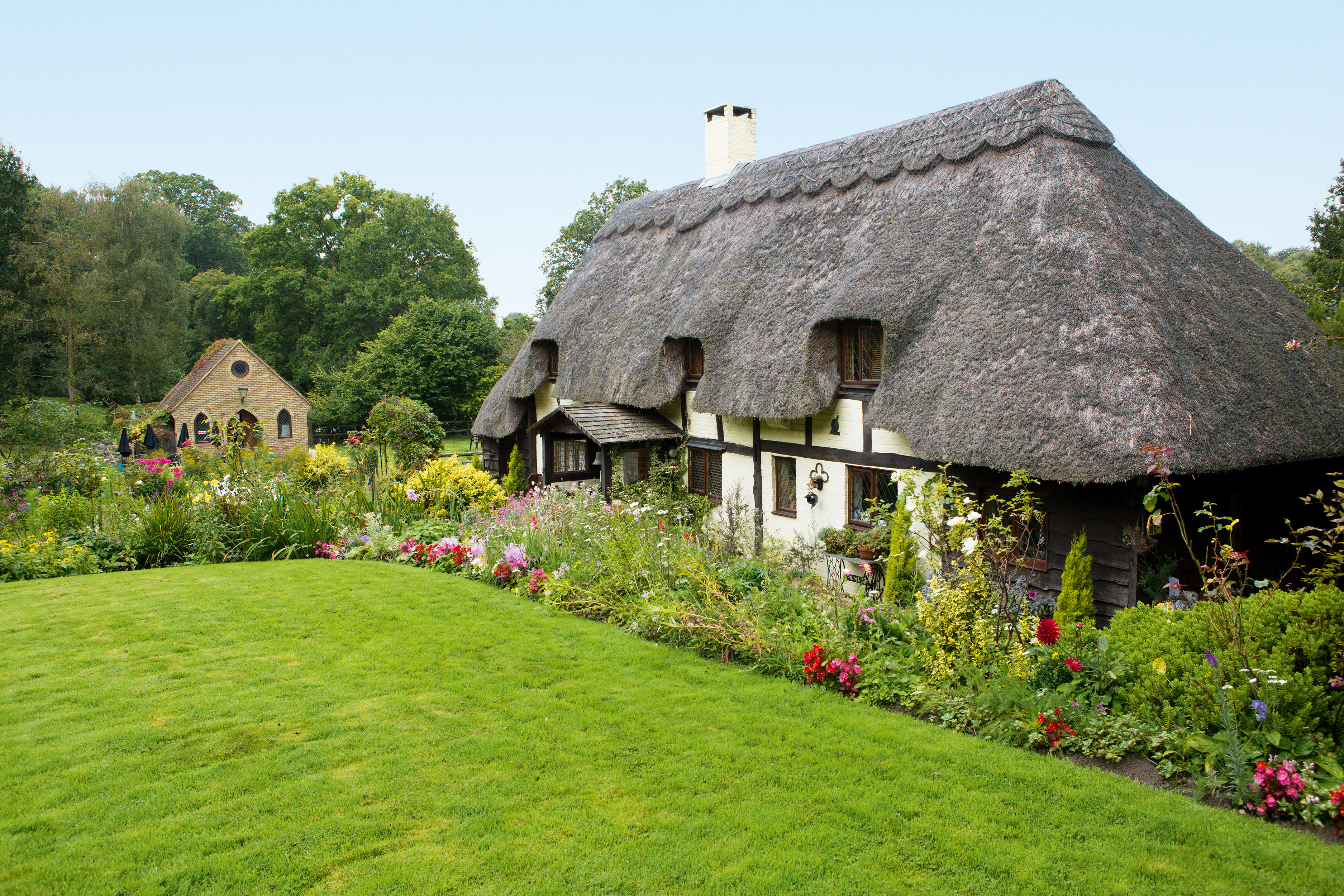
When Jill Ede bought her pretty thatched cottage in 1986, it hadn’t been lived in for four years. Set in a clearing beside the Basingstoke Canal in Hampshire, and surrounded by dappled woodland, the cottage's garden was a blank canvas. Over the years Jill has developed it into a relaxing haven.
Read on to find out how Jill transformed the garden. Then check out more real home and garden transformations. Find advice on how to create your own cottage garden, too.
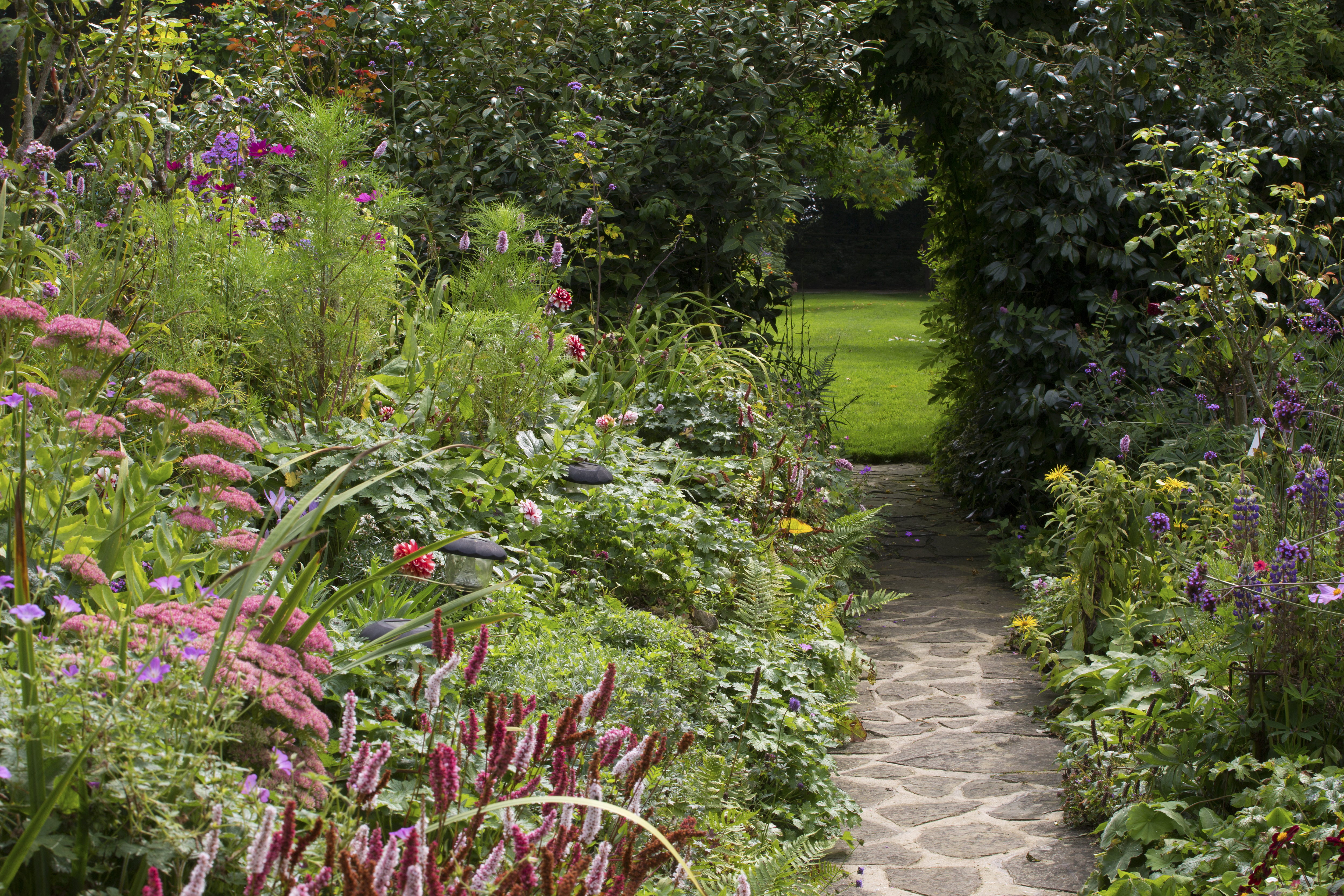
The borders are filled with late season interest from sedums, Persicaria amplexicaulis and P. bistorta
The garden has evolved slowly, as Jill developed it from the thatched cottage outwards. The land had previously been a smallholding, so the only cultivated plants were a couple of conifers, fruit trees and some mature trees.
Now the swathes of lawn are edged with densely planted flowerbeds.
When planning the planting, Jill had to consider what would cope with the high water table and natural springs on the land, along with the acidic soil that varies from sandy to clay. ‘I also wanted to use plenty of reliable, easy care plants that would establish happily,’ she says.
Follow our advice on how to choose plants for a traditional garden scheme.
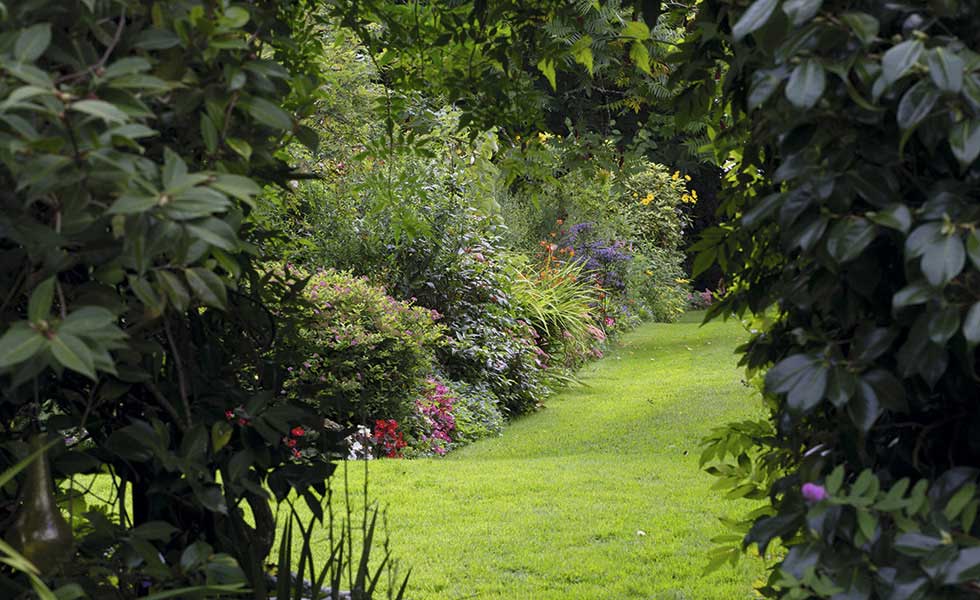
‘I have a covered earth policy to keep the moisture in and weeds suppressed,’ Jills says, in explaining her rather eclectic cottage style. This sees a succession of densely planted blooms throughout the year, from spring bulbs, including thousands of daffodils, through billowing wild flowers, summer roses and peonies, to late-season choices, such as Japanese anemones, cosmos and asters.
Get small space home decor ideas, celeb inspiration, DIY tips and more, straight to your inbox!
Find more tips and inspiration on choosing a colour scheme for your garden.

Ivy trails out of an old painted wheelbarrow set in a shady corner of the garden, while red begonias echo the colour of its wheels
‘I like to use lots of home-grown annuals, pollinated by our bees and fertilised by our donkeys,’ says Jill. ‘I also always have plants in pots that are waiting in the wings, ready to fill any gaps in the borders. Some are then sunk in the ground in their pots, and others planted in.’
Find plenty more ideas and inspiration for the best ways to use containers in your garden.
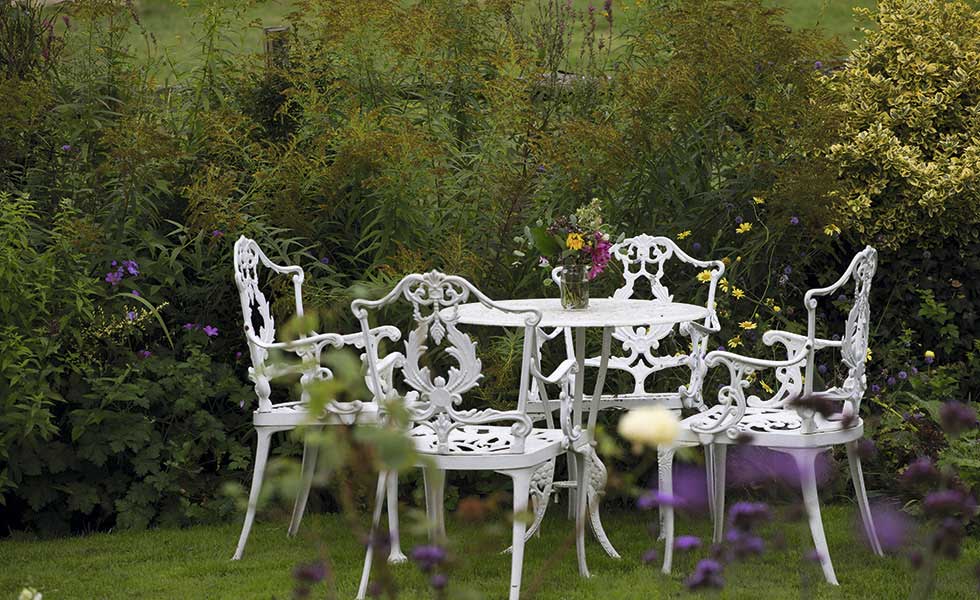
A pretty wrought iron white dining furniture set is positioned in a corner of the garden
Self-seeding plants are actively encouraged, such as geraniums, forget-me-nots, poppies, sweet William and honesty. Linking the effect are the shades of greens from shrubs and mature trees that gradually change from fresh astringent limes to more muted tones.
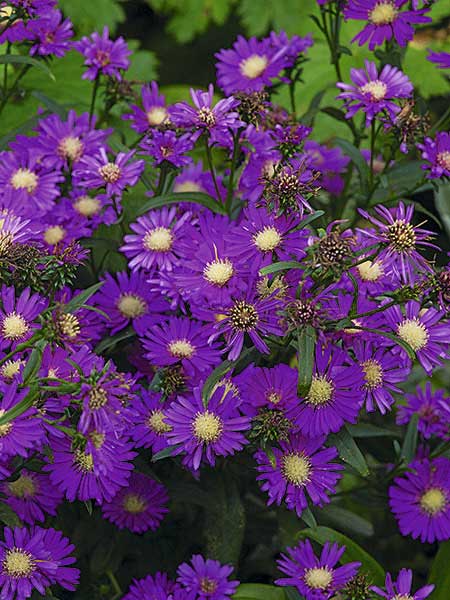
The vertical element is also considered with clematis, roses and other climbing plants scrambling up supports and arches.
Find more tips on vertical gardening.
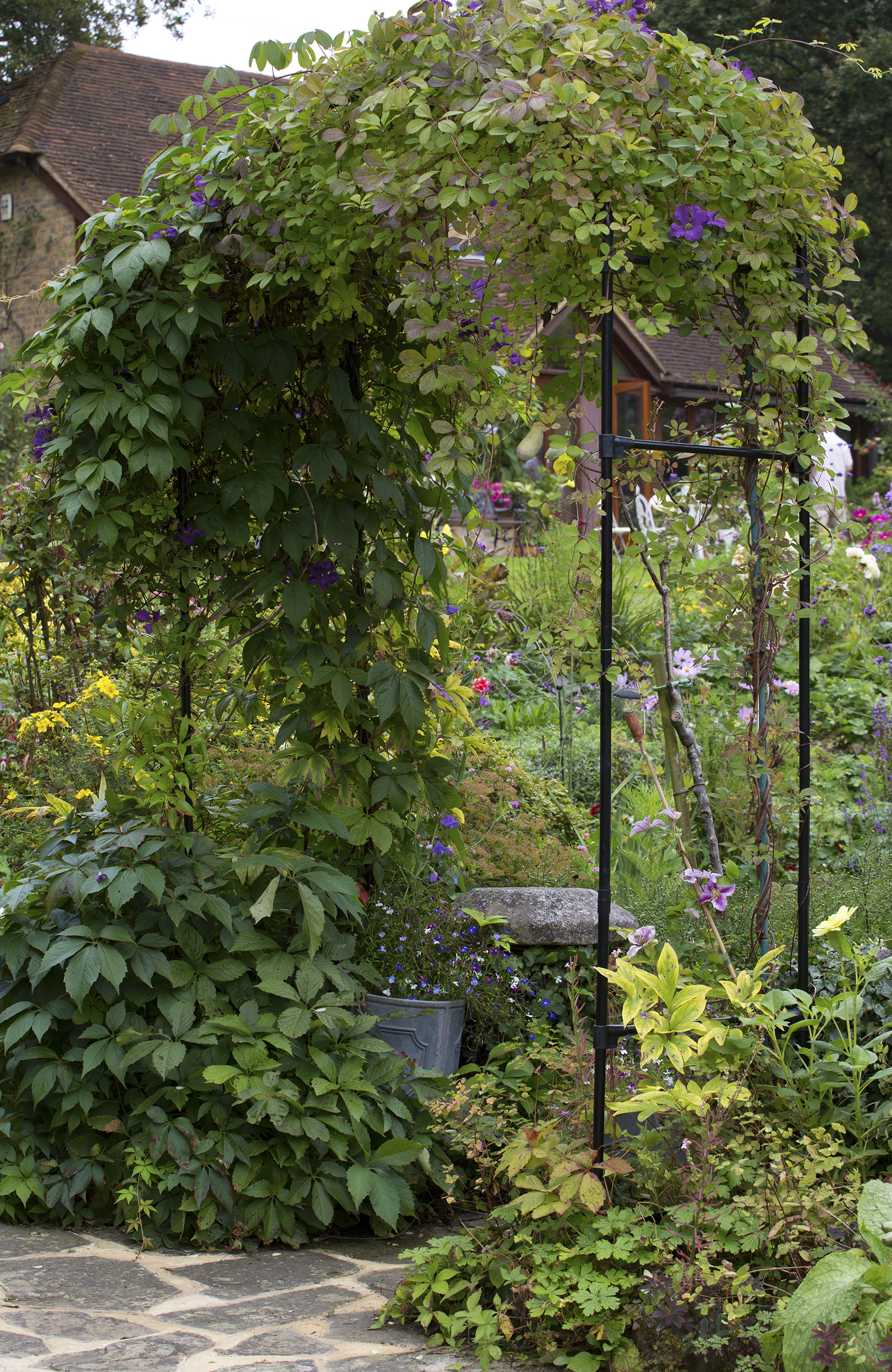
Areas are divided by low buxus hedges and simple rustic fences. Care has also been taken to have a balanced eco-system. ‘We have fruit trees that have been given to us as gifts from friends and family, and a modest vegetable garden edged in box and mulched with our sheep’s wool,’ says Jill. Here there are beans and tomatoes climbing the arches, architectural heads of artichokes and clouds of fennel.
See our advice on how to create a kitchen garden brimming with healthy and nutritious vegetables and fruit.

Dotted throughout the garden are quirky focal points created from a range of rustic recycled items. ‘I am always on the lookout for something of interest or that has been abandoned, to transform it into something useful,’ says Jill.
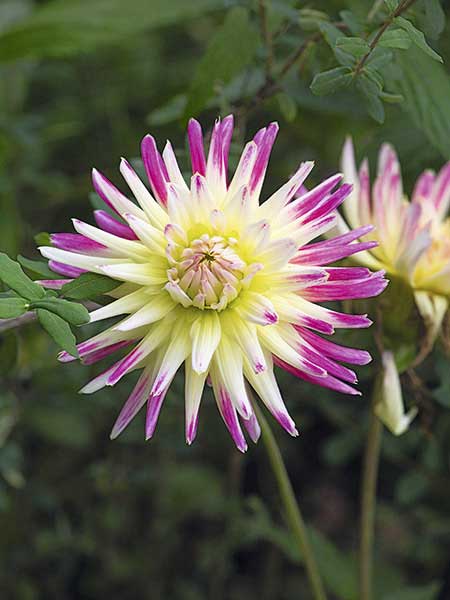
She took some old tools to the blacksmith to have them made into a gate for the vegetable garden. You may spot unusual containers brimming with plants, such as an old bathtub by the front door.
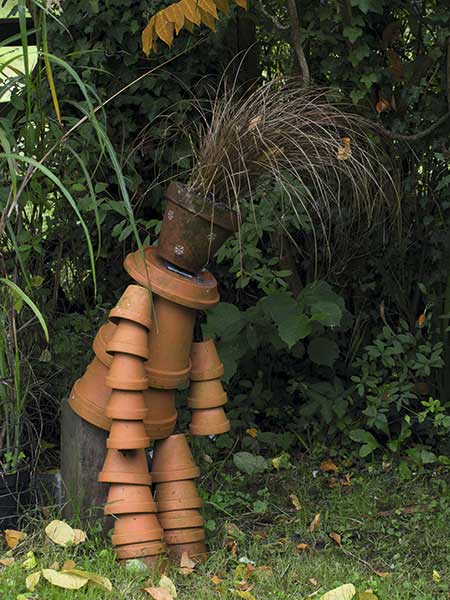
Another passion for Jill is keeping happy the bees that live in weathered timber hives nestled under the apple trees.
Jill opens the garden through the National Gardens Scheme for a day in April, July and September. ‘After the open day in September it’s time to reflect on what went well in the garden,’ she says, ‘using the yearbook I keep of what’s planted where, so I can plan any changes.’
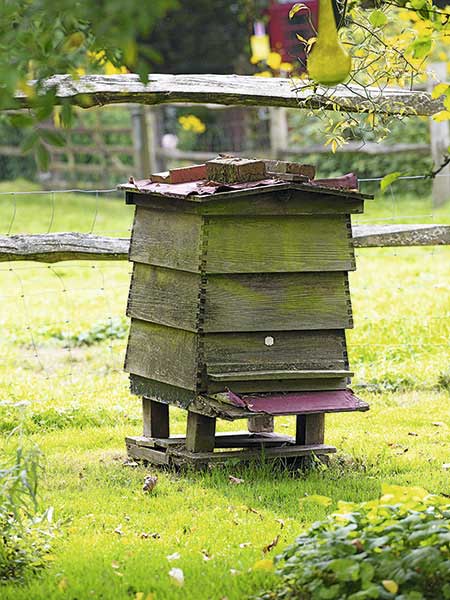
Jill’s garden advice
- Eclectic colour schemes work well in a cottage garden
- Fill in gaps with plants in pots that you have ready as stand-bys
- Include lots of fragrant plants, especially along paths
- Don’t throw away broken things – a cracked china teacup or old teapot can become a container for succulents
- Recycle found pieces into sculpture, or even a gate

Long blooming Phlox paniculata 'Amethyst' works well with a burst of Jamaica dahlias